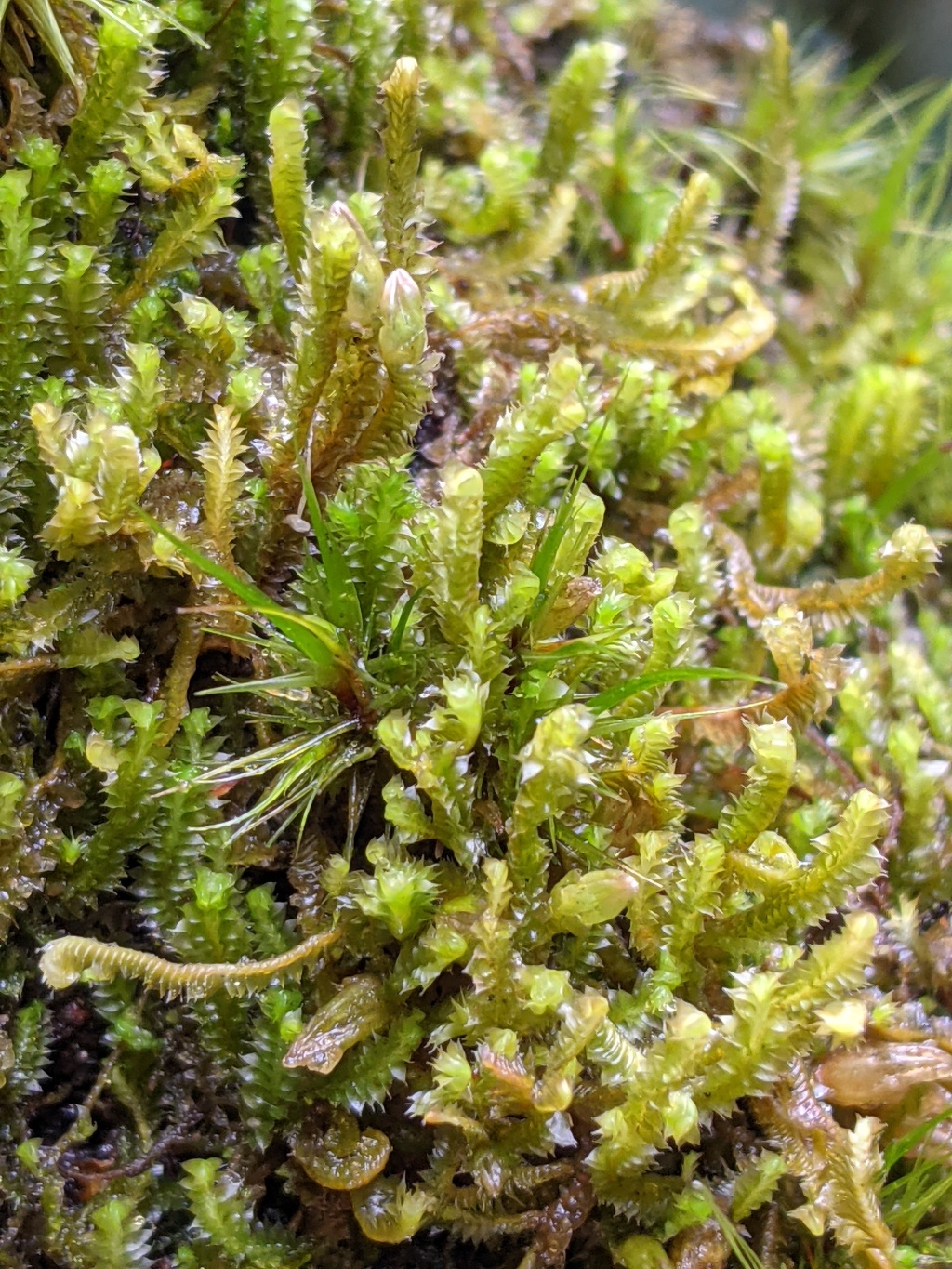Cuspidatula
Epiphytic or lithophytic, dioicous. Specialised asexual propagules absent. Stems procumbent to erect, irregularly branched, with two ranks of lateral leaves; branches emerging from ventral side of stem and with a collar of tissue at base or (not in Victoria) emerging laterally and without a collar of tissue at base. Leaves asymmetrically ovate to ovate-lanceolate with an acute, short-acuminate or piliferous, or (not in Victoria) rounded apex, succubous, alternate, imbricate, laterally patent when moist to secund in the direction of the adaxial stem when dry, entire. Leaf cells hexagonal, circular, elliptic or oblong, sometimes more elongate at apex and base, smooth, thin-walled to thick-walled, with large nodose and often confluent trigones, with 5–10 oil bodies; oil bodies ellipsoid to spherical, granular-botryoidal, colourless. Rhizoids scattered. Androecia spicate, with ventricose bracts, each with a single antheridium. Sporophyte terminal on stem, developing within a perianth and subtended by bracts; perianth ovoid, deeply plicate in apical three quarters, with entire (not in Victoria), crenulate (not in Victoria) or ciliate to laciniate mouth; bracts strongly differentiated from leaves, larger and usually more dissected, with 2–3 lobes and sometimes small teeth along margin, rarely unlobed (not in Victoria); capsule ovoid, 4–5-stratose; elaters bispiral; spores globose, papillose.
Seven species shared between tropical Africa, Madagascar and the Mascarene Islands, the Seychelles, Malesia to the tropical Pacific, New Zealand, and south-east Australia, with one species, C. monodon (Taylor) Steph., in Victoria (Schuster 2002; Feldberg et al. 2010; Váňa et al. 2013).
Feldberg, K., Váňa, J., Hentschel, J. & Heinrichs, J. (2010). Currently accepted species and new combinations in Jamesonielloideae (Adelanthaceae, Jungermanniales). Cryptogamie, Bryologie 31: 141–146.
Váňa, J., Söderström, L., Hagborg, A., von Konrat, M. (2013). Notes on early land plants today. 17. Transfers of some taxa in Adelanthaceae (Marchantiophyta). Phytotaxa 76: 35–36.
Schuster, R.M. (2002). Austral Hepaticae Part II. Nova Hedwigia Beiheft 119. Cramer in der Gebrüder Borntraeger Verlagsbuchbehandlung: Berling & Stuttgart.
 Spinning
Spinning